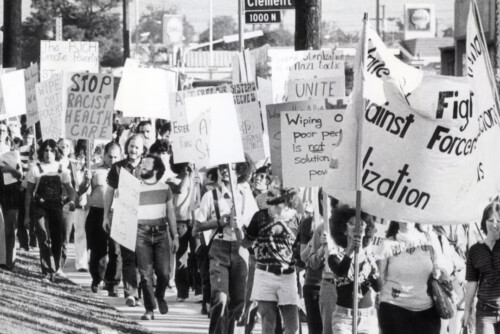Democratic Dreams: Kinship, Accountability, and the Politics of Care
Understanding contemporary formations of forensic science requires an analysis that is “geographically broad and historically deep.” 1 We must approach technologies as spaces where histories become condensed onto material objects and routinized practices; moreover, these histories are as much about technology formation itself, as contemporary forms of biopower. 2 In order to understand the contemporary Guatemalan DNA project, which takes for granted the very possibility that DNA can and must give a name to the suffering dead and disappeared, it is important to periodize the project as a twenty-first-century articulation of humanitarian aid and development. As I have shown, Argentina was the site of the invention of forensic DNA as a human rights tool, embedding within its practice a politicized kinship as democratic accountability. This forensic practice first took place within a burgeoning global human rights movement with little explicit transnational and local political support, 3 giving family members, particularly the Mothers and Grandmothers of the Plaza de Mayo, unprecedented power in crafting the form and function of democratic transition and justice. Guatemala’s forensic DNA databank project is positioned in a radically different global field, where human rights discourse has become ideologically and politically hegemonic. 4 Forensic DNA has become a universal tool in post-disaster and post-conflict human identification. It is deeply imbricated in everyday policing in nearly every nation on the globe and is foundational to practices of surveillance and biosecurity in the post-911 war on terror. Within this intensification of genetic essentialism, risk, and surveillance, how can we best understand the continued ideological linking of DNA identification, human rights, and healing?
In the case of the Index of Grandpaternity as it was used in the 1980s, this reconstruction involved painstaking genealogical mapping, large samples of blood from many generations of the family, and careful and difficult mathematical modeling of inheritance models of HLA proteins. In order to connect a supposed grandchild with his grandparents, the parental generation (those that had been brutally disappeared by the dictatorship) had to be virtually reconstructed. What would their pattern of inheritance have been? How might this translate to their children? This identification work not only connected the grandchild and grandparent, it necessitated the ghostly apparition of the disappeared as conduit of connection. Today this same work of apparition is calculated quickly with powerful computer programs like genemapper and Mfasys. But the statistical return of the dead and the virtual re-membering of the broken family remains the center of the project of post-violence identification. The technology as a statistical, technological, and material practice, requires kinship. Outside of anthropology, the most prolific use of kinship charts is in this field of forensic identification, where activists and scientist alike see their social justice work as realigning social configurations of kinship with a seemingly undisturbed pre-violence genetic kinship formation. Thus, the restitution of the dead and missing via the very material practice of forensic genetic identification constructs identity and citizenship as biogenetic and familial. A comparison of Argentina and Guatemala highlights a counterintuitive point: that while in the Argentinian case, genetic identification also presumed identity and citizenship as biogenetic and familial, the successful location and reconstruction of a live grandson or granddaughter actually had ambivalent effects for the smooth lamination of identity and biogenetic essence. That is, the disappeared living grandchildren who were the initial focus of DNA identification in Argentina also had deep ties, however “criminally” realized, to the families that raised them, thus underscoring kinship and identity as also “adopted” and politically and militarily made, rather than simply genetically inheritable. In Guatemala, the practice of genocide lead to widescale death of adults and children and few opportunities to express “in life” any ambivalence or nuance to an ascribed biogenetic kinship. In the focus on the dead, a different kind of singular mode of identity emerged as just and democratic—a linear, heritable, and singularly genetic political identity.
DNA’s later political utility as tool of transnational governmentality is precisely its contested power of an imagined re-connection and return—its ability to figuratively repair the kinship ties ruptured by disappearance and appropriation. In putting the family back in order—repairing the genetic tree—disappearance is eliminated, or at the very least reconfigured as a missing piece of a puzzle that only need fit to become whole again. Ironically, the strategic power of DNA identification in a fractured country like Guatemala also lies in its capacities to make familial connection or reunification possible—through close focus on the science and institutional achievements in singular scientific accreditation—without digging up the atrocities of the government (or the better phrasing may be, shifting attention away from those scenes of atrocity). That is to say that DNA is confirmatory, rather than investigatory—it can connect samples, but does not document the crimes of the body. Unlike documentary techniques either through the opening of archives or memory work, or even forensic anthropology, DNA is able to reconnect without documenting the nature of the crimes—thus eliding the state’s responsibility for systematic appropriation of children or genocide. DNA identification does not offer information about a perpetrator, and in its usage in human rights work does not answer the questions of who is responsible, how people were killed, and for what ends are we using DNA to reconnect to still victimized indigenous families—questions deeply linked to accountability. Instead, DNA can only do this kinship work of reconnection, of answering the “who is it” demanded by an unidentified body, not the more complex questioning of governance and racial and economic fractures in Guatemala demanded by large-scale genocide and violence. The focus of genetic work in the case of post-violence identification becomes the families of the missing, rather than the perpetrators.
The dominant voices both praising and critiquing DNA technologies have been subsumed within facile oppositions: the expansion of biopower and surveillance versus access to justice through technological equity. I suggest, however, that a close analysis of the Guatemalan DNA laboratory and attention to the historical development of forensic genetics in Latin America offers a correction to this dichotomy. Through an ethnographic attention to the construction and mobilization across time and space of DNA technologies as packaged politicoscientific interventions into mass suffering and political collapse, we gain new perspectives not only on suffering and survival, but also on the relationship between technology, political subjectivity, and social justice. By mapping the overlapping flows of terror and scientific knowledge that structure the biopolitics of contemporary forms of life in spaces of despair, exclusion, and crisis, we can challenge taken-for-granted assumptions about the global, ideological, and material terrain of scientific knowledge and technology.
Coda
At a recent conference for Latin American forensic anthropology, a US director of a forensic training center explained that Latin America was the ideal place for academic exchanges and training centers because of the sheer volume of cases. In a single month, Latin American forensic teams examine more bodies than most US and European Medical Examiner’s offices see in an entire year. In a macabre twist, the enormity of the violence, the magnitude of terror, and the embarrassing neglect of identification by local governments, while creating a human rights crisis and a culture of neglect and oblivion, also created, from the perspective of academic scientists in the Global North, a forensic goldmine—an invaluable experimental site for teaching and developing new methods in forensic science. Latin American Cold-War disappearance and death became the grounds for forensic knowledge production. Like radiation science after Hiroshima and Chernobyl, 5) and the discovery of prions through research on Kuru disease among indigenous groups in Papua New Guinea, 6 catastrophe paired with the routinization of structural violence and global inequalities has often been the unacknowledged grounds of Western scientific hegemony.
But this view of scientific imperialism fails to take into account the suffering and meaning that litter the space of the dead and living in Latin America. At a recent conference, Joana, a Peruvian woman, whose older brother was recently identified as one among several bodies in unmarked graves, described the agony of her mother in the face of disappearance: “These last few months have been very difficult. Even as we have searched these many years knowing he is dead […] I think about my mother and how there is no word for a mother who has lost her child. For a child who has lost a parent, we call him an orphan. A wife who has lost a husband, she is a widow. But a mother, there is no name. It is pain without words.” Disappearance and DNA kinship analysis have deep affective dimensions that cannot be subsumed within political stakes.
Returning to the tour, to that path I traversed in this paper, where the disappeared as zoe and bios are transmuted seemingly at the same moment into data and democracy, I recall the wall in the conference room at the end of the tour—a large poster offered a final plea to visitors, an opportunity to remember, and more importantly, to participate with their bodies, their money, their time, their public support: “My name is not XX. Your DNA can identify me.” This forensic DNA laboratory becomes many things: a regional training center, consultant to the state prosecutor, showpiece for foreign dignitaries, and high-tech memorial space for the most marginalized members of the Guatemalan nation-state, a site of intensive purification and care. One might say of this twenty-first-century moment of reconstitution, repair, and faith: give me a laboratory and I will raise a nation.
- P. Farmer, Pathologies of Power: Health, Human Rights, and the New War on the Poor, (Berkeley: U of California P, 2003): 42.[↑]
- Jasanoff 2011; Winifred Tate, Counting the Dead: The Culture and Politics of Human Rights Activism in Colombia, (Berkeley: U of California P, 2007); P. Redfield, “Doctors, Borders, and Life in Crisis,” Cultural Anthropology 20.3(2005): 328–361; S. E. Merry, “Measuring the World,” Current Anthropology 52 (2011): S83; A. Petryna, Life Exposed: Biological Citizens after Chernobyl, (Princeton: Princeton UP, 2002).[↑]
- Cf. Samuel Moyn, The Last Utopia: Human Rights in History, (Cambridge: Belknap Press, 2010).[↑]
- Michael Ignatieff, Human Rights as Politics and Idolatry, (Princeton: Princeton UP, 2011).[↑]
- M. Susan Lindee, Suffering Made Real: American Science and the Survivors at Hiroshima (Chicago: U of Chicago P, 1997); Petryna 2002.[↑]
- Anderson 2008.[↑]




